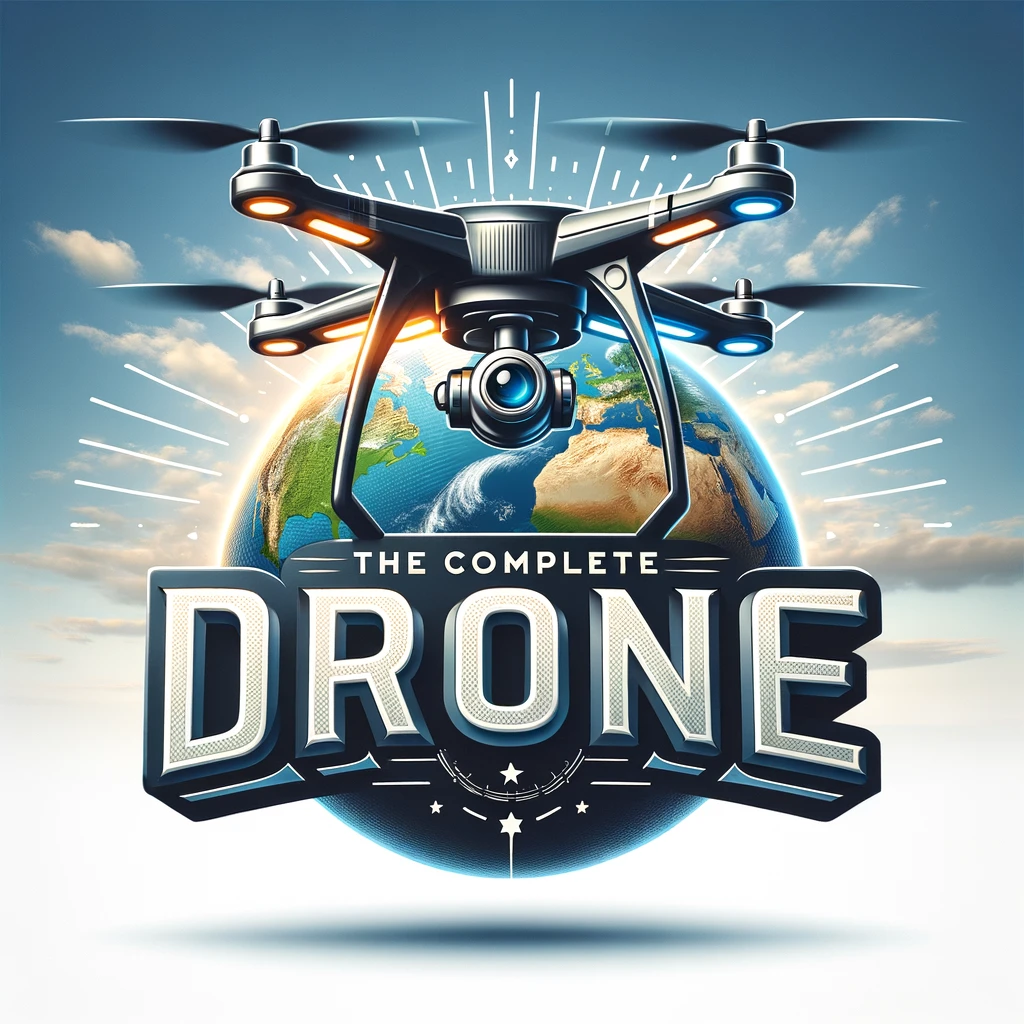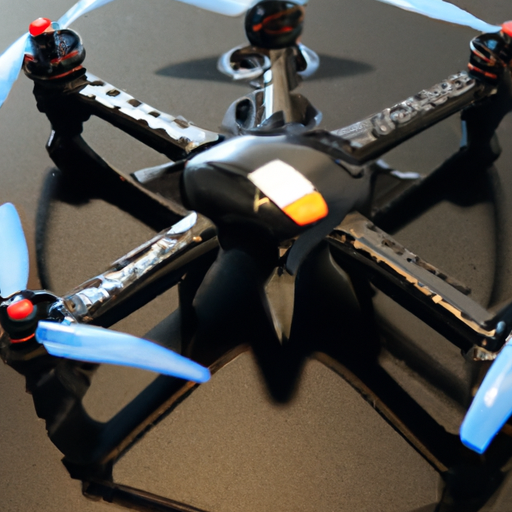If you’re new to the world of remote control drones, you might be wondering what exactly you should know to get started. Well, look no further! This article will provide you with all the essential information that beginners need to know about remote control drones. From understanding the different types of drones to learning about their basic controls and safety precautions, you’ll gain the confidence you need to take to the skies and explore the exciting world of drone flying. So let’s get ready to soar into the realm of remote control drones! Remote control drones have become increasingly popular in recent years, offering an exciting and innovative way to explore and capture the world from new perspectives. Whether you are interested in aerial photography, racing, or simply having fun, remote control drones come in a variety of types, with different components and features to suit your needs. In this article, we will explore the basics of remote control drones, including the different types, components, understanding remote control, choosing the right drone, and safety precautions for beginners.
Types of Remote Control Drones
Toy Drones
Toy drones are an excellent choice for beginners who are just starting their journey into the world of remote control drones. These drones are usually smaller, lightweight, and more affordable than other types. They often come with simple controls and are designed for recreational flying indoors or in calm outdoor conditions. While toy drones may not have the advanced features of other drones, they still provide an enjoyable experience and a great introduction to remote control flying.
Camera Drones
If you are interested in capturing stunning aerial photographs or videos, a camera drone is the perfect choice. These drones are equipped with high-quality cameras that can capture images and videos from different altitudes and angles. Camera drones often have built-in stabilization systems to ensure smooth footage and may offer features like GPS positioning, follow-me modes, and waypoint navigation. Whether you are a hobbyist or a professional photographer, camera drones can take your creativity to new heights.
Racing Drones
For those seeking an adrenaline-filled experience, racing drones are specifically designed for high-speed racing. These drones are built to be lightweight and agile, with powerful motors and aerodynamic frames. Racing drones usually come without a built-in camera, as the focus is on speed and maneuverability rather than photography. Engaging in drone racing can be an exhilarating and competitive hobby, pushing your piloting skills to the limit as you navigate through obstacle courses and race against other drone enthusiasts.
FPV Drones
First-person view (FPV) drones provide an immersive flying experience by incorporating live video transmission. With the help of FPV goggles or a monitor, you can see exactly what the drone sees in real-time. This allows you to navigate and control the drone as if you were sitting inside it, giving you a unique perspective and enhancing the thrill of flying. FPV drones are popular among aerial photographers, racers, and those who want to experience a sense of flight without leaving the ground.
Components of Remote Control Drones
To better understand how remote control drones work, let’s take a closer look at their main components:
Frame
The frame serves as the structural backbone of the drone, providing support and protection for the internal components. Frames can be made from various materials such as carbon fiber, plastic, or metal alloys. The choice of frame material affects the drone’s weight, durability, and flight characteristics.
Motors
Drones rely on motors to generate the necessary lift and propulsion to stay airborne. The number of motors depends on the drone’s design, with most drones having anywhere from three to eight motors. The motors are typically brushless and come in different sizes and power ratings, influencing the drone’s speed, stability, and flight time.
Flight Controller
The flight controller acts as the brain of the drone, receiving input from the user and processing it to control the motors and other components. It uses various sensors such as gyroscopes and accelerometers to maintain stability and adjust the drone’s position in response to user commands. The flight controller also plays a crucial role in allowing autonomous flight modes and advanced maneuvers.
Battery
The battery is the drone’s power source, supplying electricity to the motors, flight controller, and other electronic components. Lithium polymer (LiPo) batteries are commonly used due to their high energy density, lightweight, and rechargeable nature. The battery’s capacity, measured in milliampere-hours (mAh), determines the drone’s flight time, while its voltage rating affects the power output of the motors.
Propellers
Propellers are responsible for generating thrust by pushing air downwards, allowing the drone to ascend, descend, and change direction. Most drones have two pairs of propellers spinning in opposite directions, ensuring stability and balance during flight. The size, pitch, and material of the propellers impact the drone’s performance and efficiency.
Camera (in camera drones)
Camera drones are equipped with cameras that can capture photos and videos remotely. The type and quality of the camera vary depending on the drone model, ranging from lower-resolution cameras suitable for beginners to professional-grade cameras capable of capturing high-definition footage. Some camera drones also offer features like gimbal stabilization for smooth and steady shots.
Controller
The controller, also known as the transmitter, is the handheld device used to pilot the drone. It communicates wirelessly with the drone’s receiver, translating user inputs into commands that control the drone’s movements. Controllers often feature joysticks, switches, and buttons for controlling the drone’s throttle, yaw, pitch, and roll.
Transmitter
The transmitter is the part of the controller responsible for transmitting the control signals to the drone. It operates on specific radio frequencies and uses channels to avoid interference from other devices. Transmitters vary in range and power, with higher-end models providing longer control distances and stronger signal transmission.
Receiver
The receiver is located on the drone and receives the control signals from the transmitter. It decodes the signals and relays them to the flight controller, allowing the drone to respond to the user’s commands. Receivers are designed to work with a specific frequency range and channel configuration, ensuring seamless communication between the controller and the drone.
Understanding Remote Control
Modes: Manual vs. Autonomous
Remote control drones can operate in different modes, offering varying levels of control and autonomy. Manual mode, also known as Acro mode, gives the pilot complete control over the drone’s movements, requiring skill and precision to fly smoothly. Autonomous modes, on the other hand, allow the drone to perform automated tasks based on pre-programmed instructions or intelligent algorithms. These modes include features such as waypoint navigation, follow-me mode, and automated return-to-home functions.
Control Range and Signal Strength
The control range refers to the maximum distance between the drone and the controller, within which the drone can receive and respond to control signals. It is important to consider the control range when choosing a drone, as it determines how far you can fly the drone without losing control. Signal strength is closely related to control range and can be affected by obstacles, electromagnetic interference, and environmental conditions.
Channels and Frequencies
Controllers and drones operate on specific radio frequencies and use channels for communication. The number of channels determines how many devices can operate simultaneously without interfering with each other. Most controllers offer multiple channels, allowing you to change frequencies and avoid interference from other drones or wireless devices in the area.
Trim and Calibration
Trim refers to the adjustment of control inputs to ensure the drone hovers or flies straight without any manual input. Each drone has its own trim settings, and it is important to calibrate the drone’s sensors and controls before each flight. Calibration helps the drone maintain stability and respond accurately to control inputs, ensuring a smooth and controlled flight experience.
Choosing the Right Drone
When choosing a remote control drone, several factors should be taken into consideration:
Consider Your Skill Level
If you are a beginner, it is advisable to start with a toy drone or a beginner-friendly model. These drones are designed to be easy to fly and forgiving of mistakes. As you gain experience and confidence, you can move on to more advanced drones with additional features and capabilities.
Purpose of Use
Consider what you intend to use the drone for. Are you interested in aerial photography, racing, or simply leisure flying? Different types of drones cater to specific purposes, so choose one that aligns with your interests and goals.
Budget
Drones come in a wide range of prices, so it is important to establish a budget before making a purchase. Take into account not only the initial cost of the drone but also additional expenses such as batteries, spare parts, and accessories.
Features to Look For
Depending on your needs, you may want to look for specific features in a drone. These can include things like built-in cameras, GPS capabilities, intelligent flight modes, obstacle avoidance systems, and long flight times. Research the available options and compare the features to find the drone that best suits your requirements.
Safety Precautions for Beginners
While remote control drones offer a thrilling and enjoyable experience, it is essential to prioritize safety at all times. Here are some safety precautions to consider, especially if you are a beginner:
Learn the Drone Laws and Regulations
Before flying a drone, familiarize yourself with the local laws and regulations regarding drone usage. Different countries and regions may have specific rules governing where and how you can fly your drone. Stay informed to avoid any legal issues and ensure the safety of yourself and others.
Fly in Open Spaces
When flying a drone, it is best to choose open areas such as parks or fields, away from people, buildings, and obstacles. Open spaces provide more room for maneuvers and reduce the risk of collisions.
Avoid Crowded Areas
Avoid flying your drone in crowded areas, especially where there are large gatherings of people. Drones can be distracting and intrusive, so it is important to respect the privacy and safety of others.
Keep Line of Sight
Maintain a clear line of sight with your drone at all times. This allows you to see and avoid any potential hazards or obstacles. Flying beyond your line of sight can lead to loss of control and accidents.
Check Weather Conditions
Always check the weather conditions before flying your drone. Wind, rain, and other adverse weather conditions can affect the stability and control of the drone. Avoid flying in strong winds or during severe weather events.
Consider Liability Insurance
Consider obtaining liability insurance for your drone. While not mandatory in all locations, liability insurance provides coverage in case you accidentally damage property or injure someone while flying your drone. It can offer peace of mind and protect you from potential financial liabilities.
Handle Batteries Properly
Handle drone batteries with care to avoid accidents and damage. Follow the manufacturer’s instructions for charging, storage, and handling. Do not overcharge or leave batteries unattended while charging. Use fire-resistant bags or cases to store and transport batteries safely.
By understanding the different types of remote control drones, their components, the fundamentals of remote control, and the factors to consider when choosing a drone, you can embark on your drone flying journey with confidence. Remember to always prioritize safety, follow the laws and regulations, and practice responsible flying. Remote control drones offer endless possibilities for exploration and creativity, allowing you to experience the world from a whole new perspective. So strap on your goggles or grab your controller, and get ready to take flight!

